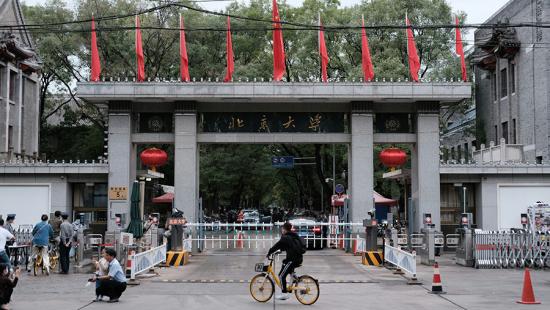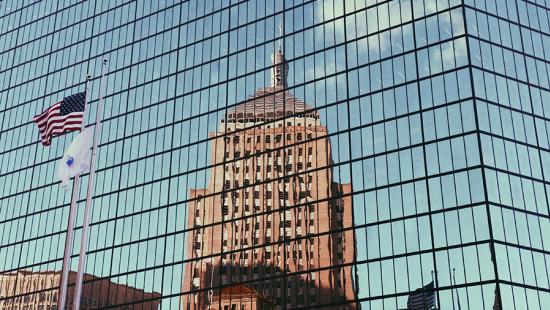Studio Talks, Spring 2021

image/provided
Overview
The primary objective of Studio Talks is to provide the faculty opportunity to diversify the voices and expand the important conversations embedded in the Option Studio. Framed as an opportunity for 'radical collaboration' – or the bringing in of alternative voices to advance creative thinking and meaningful innovation, these Studio Talks offer opportunities to introduce distinct perspectives and alternative readings, and perhaps unique technologies and/or methodologies, that open up the potentials of diverse and inclusive participatory design processes.
The following talks, workshops, and reviews have been curated and organized by the design faculty leading the Option Studios, and are open to the Cornell community. Many of the invited participants are from disciplines external to architecture and offer a parallel line of inquiry that serves to expand the studio's pedagogy while providing rich opportunities for collaborations across disciplines.
February 16: Thomas O'Rourke
Thomas R. Biggs Professor, Civil and Environmental Engineering, Cornell University
February 22: Lindsay Erickson
Johnston Marklee, Senior Associate
February 24: Gretchen Stoecker
Kevin Daly Architects, Director
February 25: Mauricio Rocha & German Valenzuela
Taller de Arquitectura Mauricio Rocha, Mexico | School of Talca, Chile
February 26: Sade Elhawary
Community Coalition South LA, Lead Strategic Initiatives
March 2: Amy MacDonald & Rob Otani
Principal, Resilience Practice, Thornton Tomasetti | Principal, CORE Studio, Thornton Tomasetti
March 11: Sol Camacho & Gabriel Kogan
Raddar, Brazil | Espaco SEM Nome, Brazil
March 11: Erik Olsen
Managing Partner, Transsolar KlimaEngineering
March 12: Sören Grünert
Bjarke Ingels Group (BIG)
March 16: Steve Colletta & Rob DaRos
Sr. Vice President and Vice President, Sciame Construction
March 17: Leonardo Finotti & Michelle Jean de Castro
Architectural Photographer & Curator, Founders of LAMA.SP
March 17: Susan Jones
Atelier Jones
March 18: Frida Escobedo & Sumayya Vally
Architect, Mexico | Counterspace, Africa
March 23: Denny Regini & Claudia Pavan
President and Sr. Project Manager, Cimolai USA
March 25: David Barragan & Sami Aloulou
Al Borde, Ecuador | Septembre, Tunisia/France
March 29: Matthew Hunter
American Wood Council
March 30: Alexander Jafari, Thomas Langner, Casey Ramsey
Director, Sr. Engineer and General Superintendent, Vector Foiltec
April 1: Adel Hidar & Driss Kettani
Atelier Facila, Tunisia | Morocco
April 2: Scott Hughes
Silman
April 5: Alan Organschi
Gray Organschi Architecture
April 6: Tyler Kicera
VP, Head of Creative, TAIT Towers / Founder, Kollab
April 8: Clément Taquet & Aldo Solano Rojas
Concrete Jungle Foundation, Worldwide | Playgrounds, Mexico
April 15: Andrea Griborio & Miquel Adrià
Arquine
April 19: Billie Faircloth
Kieran Timberlake
"April 20: Frank Barkow
Principal, Barkow Leibinger
April 22: Alberto Oderiz & Isabel Abascal
Lanza Atelier
April 22: Craig Robins, Martino Stierli, Niall Hobhouse, Ania Soliman, Artur Walther
DACRA | The Philip Johnson Chief Curator of Architecture and Design at The Museum of Modern Art | The Drawing Matter trust | Artist, Paris & NY | The Walther Collection
April 27: Thom Mayne
Principal, Morphosis
April 29: Muñoz Rivas, Eloy Enciso, Theo Court, Manuel Muñoz Rivas, & Irene Gutierrez
Chile | Spain | Chile | Spain | Spain
May 10: Symposium, Activism & Neighborhood Preservation
Aurea Montes-Rodriguez | Joanne Kim | Ron Finley | Cory Henry | Mary Lee | Kenyatta McLean | Alexandre Dorriz | Noé Olivas | Alexandre Dorriz
Peter Ballman, Disaster Machines
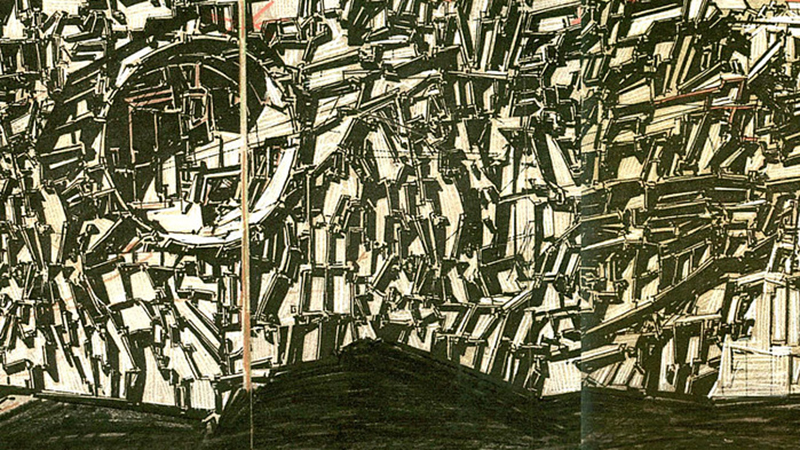
Edgar A. Tafel Talks/Workshops
This studio will explore the relationship between architecture, technology, construction, and environment through the design of infrastructure. Any work of architecture, regardless of scale or complexity, is an aggregate of technologies invented to satisfy needs and necessities inherent to the human occupation of an environment. Construction is the act of assembling these technologies sequentially and simultaneously, with varying degrees of integration. Technologies for construction and for inhabitation are kinetic, performative, and adaptive. How we identify our needs – spatial, social, and environmental – and how we execute and integrate these technological processes is critical as we create new architectures to adapt to new ways to live.
This studio will look at disasters – environmental, urban, and sociocultural – as a way to understand the needs of inhabitation in extreme cases. Each student will identify a disaster (present day or historical) and will respond to it architecturally by inventing a machine that engages it, whether through avoidance, mitigation, management, or recovery. Students will identify a problem, develop a hypothesis, define the spatial, structural, and technological systems that frame and facilitate a solution, and define the means, methods and procedures to realize it. The logic whereby each student defines and solves their problem, and the manner in which they articulate and integrate technologies, will be the critical discourse of the class.
The course will include Tafel Lectures and Workshops that will investigate specific technological processes used in design and construction, such as structure, enclosure, kinetics systems, environmental systems, acoustics, rigging, and construction coordination, to show how various technologies and methods are implemented in all aspects of building. Speakers will include project leaders from some or all of the following: Cimolai, Thornton Tomasetti, Vector Foiltec, TAIT Towers, Transsolar, Budco, and Sciame Construction. Speakers will provide firsthand professional experience and information to help facilitate a high level of technical development in student work.
February 16
Agents of Change for Resilient Infrastructure
Thomas O'Rourke
Thomas R. Biggs Professor, Civil and Environmental Engineering, Cornell University
March 2
Engineering for Resilience
Amy MacDonald
Principal, Resilience Practice, Thornton Tomasetti
Digital Fabrication in Practice, Machine Learning, Digital Twins
Rob Otani
Principal, CORE Studio, Thornton Tomasetti
March 11
High Tech / Low Tech, Visualizing Energy
Erik Olsen
Managing Partner, Transsolar KlimaEngineering
March 16
Language and Practice of Construction
Steve Colletta & Rob DaRos
Sr. Vice President and Vice President, Sciame Construction
March 23
Steel, Kinetics and Infrastructure
Denny Regini & Claudia Pavan
President and Sr. Project Manager, Cimolai USA
March 30
Performative Facades
Alexander Jafari, Thomas Langner, Casey Ramsey
Director, Sr. Engineer and General Superintendent, Vector Foiltec
April 6
Performative Structures
Tyler Kicera
VP, Head of Creative, TAIT Towers / Founder, Kollab
April 20
Bricoleur Bricolage
Frank Barkow
Principal, Barkow Leibinger
April 27
TBD
Thom Mayne
Principal, Morphosis
-------------------------------------------------------------------------------------
This Studio Talks series will take place virtually via Zoom, each starting at 9:00 a.m. EST. If you would like to attend, please contact the Department of Architecture, via kv272@cornell.edu.
Alessandra Cianchetta, Artscapes
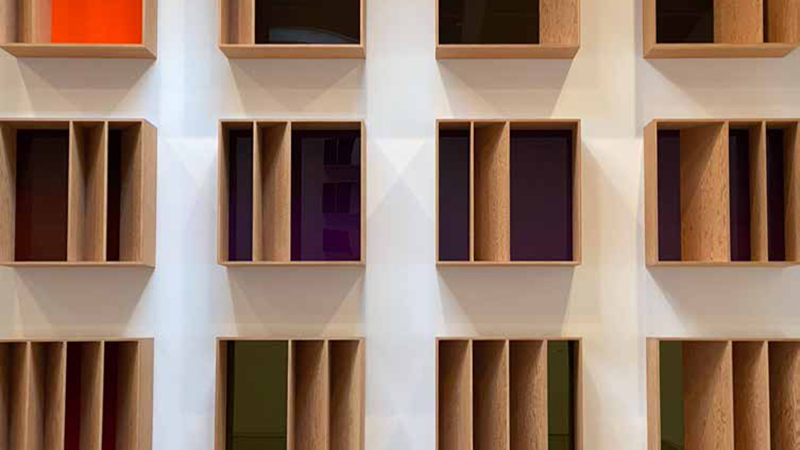
Donald Judd, Untitled. (1986) photo/Judd Foundation & Artists Rights Society (ARS)
This design studio explores the radical transformation of landscapes, territories, and cities in the context of global art collections. It develops as a dialogue and collaboration with the Swiss art gallery Hauser & Wirth, and other agents operating in the art world. It considers interrelations with less explored territories and the many opportunities and transformations that may be triggered and generated by the contemporary art market. We will examine the global landscape of art and explore and analyze the urban principles and governance models of cultural and arts districts, global art fairs and, public and private cultural institutions and museums worldwide through a series of case-studies through maps, data collection, and conceptual diagrams leading to a projection both at an urban and architectural scale. The collected case studies will form a collective atlas/book. Furthermore, we will explore and compare biennials and special projects (including private museums) worldwide and selected contemporary artworks whose focus is primarily connected to specific geographic sites and timely geopolitical conditions. We will research the classic typology of the museum and will project new hybrid typologies for the museum of the future. We will explore the following questions: How does the global art market trigger and generate new spatial forms and relationships both at a large scale (a network of intertwined territorial relationships, the emergence of the urban concept of global arts and cultural districts) and at a smaller scale (galleries, museums (public/private), foundations, special projects)? How can new urban models and economic models -related to the global art trade – be used to the benefit of larger regions and populations? Can temporary events such as biennials and fairs (global and regional) have a lasting and valuable impact on the redevelopment of regions? How can we reconsider and rethink the whole concept of private art galleries and foundations, and envisage new forms of museums (private or not) and cultural institutions at large? What about the future? Are trade, culture-led regeneration, and commodification inherent in all urban fabrics? Can new typologies of public space and (public) architecture be invented? What is the role of new peripheries? Urban vs rural, World-class vs. peripheral. Does the future lie in the 98% of the planet that is not urbanized? Is it truly the countryside where radical things can happen? Is it the aura of authenticity that increasingly attracts the art world to the country? Can art be one of the triggers to revitalize depressed rural areas?
Thursday, April 22
This workshop/studio talk will explore the role of new models for museums and art districts both private and public, and – more at large - cultural institutions of the future.
How will such places and spaces nurture the transformational possibilities inherent in the contact between the museum, artworks and collections and society at large? In which new ways can the museum of the future relate to the process of accumulation of knowledge of other societies and the construction of identities and narratives? How does it go beyond the Renaissance notion of categorizing and staging artworks?
How can we reconsider the whole concept of private art galleries and foundations, and envisage new forms of museums and cultural institutions at large? Can temporary events such as biennials and fairs or indeed private collections have a lasting and valuable impact on the redevelopment of regions and cities?
Into new landscapes, what is the role of new peripheries? Urban vs rural, world class vs. unusual, peripheral. Does the future lie in the 98% of the planet that is not urbanized or less urbanized? Is it truly the countryside where the radical things can happen? Is it the aura of authenticity that increasingly attracts the art world to the country? Can art be one of the triggers to revitalize depressed areas, rural and/or otherwise?
Guests are invited to give their vision and thoughts about the museum of the future and how they envisage the future of their own institutions/practices in a ten min presentation followed by a discussion building on the questions above and below. The ongoing pandemic has upended everything- audiences, finances, missions, priorities. What positive innovation, if any, have been made in their practices as a result of the current circumstances which they don't expect to go away in the future?
Craig Robins
President and CEO of Dacra
Martino Stierli
The Philip Johnson Chief Curator of Architecture and Design at The Museum of Modern Art
Niall Hobhouse
The Drawing Matter trust, Shatwell Farm, Somerset, UK
Ania Soliman
artist, Paris and New York
Artur Walther
The Walther Collection, New York and Neue Ulm
-------------------------------------------------------------------------------------
This Studio Talks workshop will take place virtually via Zoom. If you would like to attend, please contact the Department of Architecture, via kv272@cornell.edu.
Gesa Büttner Dias, Marginal Landscapes

The option studio collaborates with the initiative for a Center of Community Organizing, launched by the Community Coalition (CoCo) South L.A. The Center will be a place of education, exhibitions, and events for the benefit of the local community of South L.A.
What other place better to explore remotely than Los Angeles, California, a city of imagery and imagination. Los Angeles is a place of dialectics, of oscillating definitions, a muse to radical art, architecture, and social projects. It is a city of margins and inversions, where the dominant urban landscape, the rasterized inner-city suburbs, home for the majority of the population and production, is neglected for the edges, the hillsides, beachfront and inner boundaries of the freeways. This dichotomous identity makes for a place that is both object and neutral background, a destination, and a stand-in for other urban scenes. The option studio will attempt to break down this binary definition by putting the extraordinary quality of the edge conditions in dialogue with the ordinary urban fabric of the neglected central neighborhoods. The project will be located in South L.A., the geographic center of the flat plains of the inner-city suburb. South L.A. contains the mayor part of a contiguous, undisturbed expanse of the Jeffersonian Grid, a formation more typical of the subdivisions of mid-western cities. Most street fronts still have the patina of vernacular structures saved by disinvestment. Bound by major freeways, rail corridors, industrial land, and oil fields, this is the hub of Black culture in Los Angeles, the object of desire and backdrop in the complex story of the Black diaspora and its resilience in the face of racist planning and policies.
The option studio will explore Los Angeles at three scales of marginality, the landscapes at the edge of the urban agglomeration, the landscape at the edge of inner-city infrastructures, and the landscape at the edge of a building. The project will explore architecture of the in-between, as "a space for radical perspectives from which to see and create, to imagine alternative new worlds." (Bell Hooks, yearning. p.147).
In the first part, the studio will use workshops, student research, and short design exercises to engage with the topic, location, and program. We will have direct contact with our onsite partners at Coco L.A., and – by the nature of this being Los Angeles – access to a wide range of visual and written documentation of the spatial and cultural context. We will study and translate Black and other visual art practices for their negotiation of material, object, and context. Discussion of relevant theoretical texts will accompany the exercises.
In the second part, students will develop a design for the Center of Community Organizing at three scales.
February 22
Recent Works
Lindsay Erickson
Johnston Marklee, Senior Associate
February 24
Recent Works
Gretchen Stoecker
Kevin Daly Architects, Director
February 26
Activism and Civic Space in South L.A.
Sade Elhawary
Community Coalition South L.A., Lead Strategic Initiatives
March 17
Places of Symbolic Power
Leonardo Finotti & Michelle Jean de Castro
Architectural Photographer & Curator, Founders of LAMA.SP
May 10
Panel Discussion: Activism & Neighborhood Preservation
9:30 a.m. – 12:30 p.m.
How can architecture support community wellbeing and neighborhood preservation?
Looking at South Central L.A., the heart of Black life and culture in Los Angeles, this symposium brings together leading community activists, artists, policymakers, planners, and architects to discuss their thoughts on the interplay between land ownership, creative identity, equal access to healthy resources, and the self-determination of a community.
As part of the symposium, the Community Coalition and students from Cornell University will share ideas for a Center of Community Organizing.
9:30 a.m. PDT / 12:30 p.m. EDT Architecture and community organizing
Welcome
Gesa Büttner Dias / Co-host
Architect. Educator. Visiting critic Cornell AAP
Opening Statement
Aurea Montes-Rodriguez
Organizer. Executive Vice-President Community Coalition
9:45 a.m. PDT / 12:45 p.m. EDT Destination Crenshaw. Case study for a public space in defense of community identity
Keynote
Joanne Kim
Senior advisor. Lead Destination Crenshaw
10:00 a.m. PDT / 1:00 p.m. EDT Community well-being and neighborhood preservation
Dialogue With
Ron Finley
Community activist. Artist. Gardener. Founder Ron Finley Project. Community Partner Destination Crenshaw
Cory Henry
Architect. Educator. Founder, Atelier Cory Henry
Mary Lee
Consultant. Community advocate.
Kenyatta McLean
Planner. Co-Founder BlackSpace Urbanist Collective
Aurea Montes-Rodriguez
Moderator Organizer. Executive Vice-President Community Coalition
11:30 a.m. PDT / 2.30 p.m. EDT
Break
12:30 a.m. PDT / 3.30 p.m. EDT
Student projects for The Center of Community Organizing
Workshop With
Alexandre Dorriz
Artist. Co-founder Crenshaw Dairy Mart Art Center
Noé Olivas
Artist. Co-founder Crenshaw Dairy Mart Art Center
Alexandre Dorriz
Organizer. Director of Strategic Initiatives Community Coalition
-------------------------------------------------------------------------------------
This Studio Talks series will take place virtually via Zoom. If you would like to attend, please contact the Department of Architecture, via kv272@cornell.edu.
Katharina Kral, Polyvalent Housing
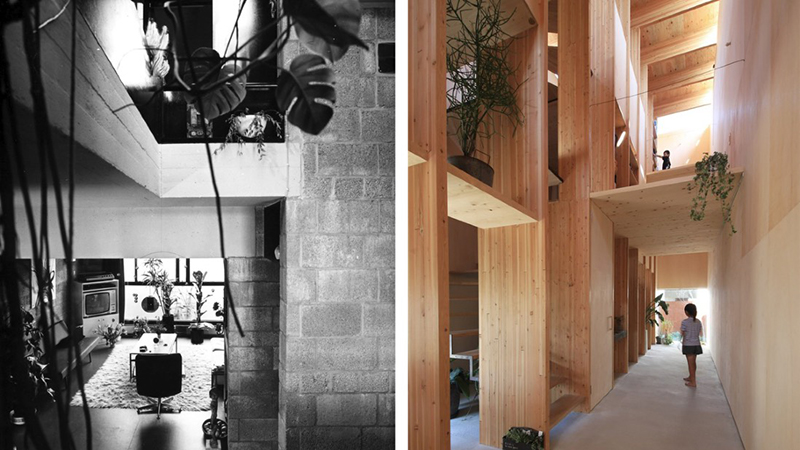
"The only constructive approach to a situation that is subject to change is a form that starts out from this changefulness as a permanent - that is, essentially a static - given factor: a form which is polyvalent. In other words, a form that can be put to different uses without having to undergo changes itself, so that a minimal flexibility can still produce an optimal solution."
~ Herman Hertzberger.
In light of climate change and urbanization, we have to rethink design and construction practices in terms of energy conservation measures, sustainable material choices, and the long-term usability of buildings. The capacity to accommodate future changes is an intrinsic aspect of sustainable design, but apartments in cities are often not tailored to the housing needs of a diverse, fluctuating urban population and are becoming increasingly unaffordable. The current pandemic further shows that most residential building typologies in a high-density urban context offer limited flexibility to adapt to changing needs (e.g. home working, childcare), and lack access to sunlight and outdoor space, which can significantly impact occupant health and well-being. Combining the temporal concepts of polyvalence and adaptation provides a new lens for tackling the conflict between the permanence of the built environment and the fluctuating needs of its inhabitants.
This studio challenges persistent housing paradigms and finite spatial configurations, leveraging emerging mass timber technologies, modular system thinking, and spatial polyvalence to develop visions for innovative, adaptive, sustainable, and high-quality housing concepts. We will investigate hard and soft programmatic and structural design parameters, spatial efficiency, relationships within and between apartments, and tectonic potentials of mass timber systems. Housing precedent and typology analyses will help systemizing aspects of "good" living environments. In tandem with hands-on material studies, these will converge in the design for a multi-family housing project.
March 12
Modular Sustainable Housing
Sören Grünert
Bjarke Ingels Group (BIG)
April 2
Timber Engineering
Scott Hughes
Silman
April 5
Leading Timber City initiative
Alan Organschi
Gray Organschi Architecture
March 17
Leading Mass Timber Research and Design Discourse in the U.S.
Susan Jones
Atelier Jones
March 29
Tall Timber, Innovations in Building Code
Matthew Hunter
American Wood Council
April 19
Sustainability in Design, Carbon Accounting
Billie Faircloth
Kieran Timberlake
-------------------------------------------------------------------------------------
This Studio Talks series will take place virtually via Zoom. If you would like to attend, please contact the Department of Architecture, via kv272@cornell.edu.
Rozana Montiel & Sana Frini, Abundant Scarcities
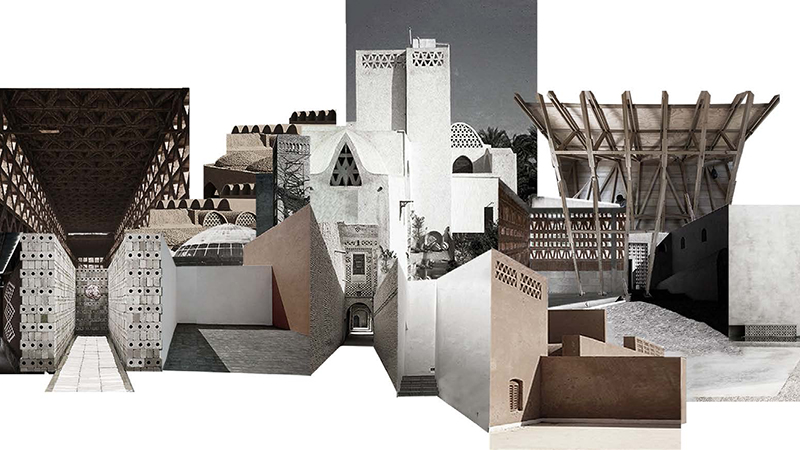
Gensler Visiting Critic Studio Talks
6 SCARCITIES / 6 CONTEXTS / 6 HABITS
Scarcity has always been a recurring theme in the daily life of countries of the global south and their different social, geographical, environmental, and political complexities. Both, in architecture and its inter-connecting disciplines, scarcity has generated processes and forms as well as ways of thinking and perceiving spaces that are gradiently distinguishable from the more patterned, abundant, and organized world of the north. Rather than understanding it as a limitation, innovators have used scarcity as a source of inspiration, a creative tool, a basis for removing layers and stripping complexity. Scarcity opens up a world of possibilities and compels us to return to the essential, finding voluntary simplicities
This studio proposes to research, experiment, and produce architectural spaces from the ABUNDANCE of SCARCITIES by focusing on two regions that represent a considerable part of the global south (the South American / the African), two geographical areas that are similar in their cultural complexities and architectural processes (Latin America / North Africa) with the perspective of two architects from these regions (one from Latin America / another from Northern Africa).
With the context of the global turning point we find ourselves in today, this studio invites students to utilize critical thinking and innovate new methodologies for producing architecture centered on the question of how to use less to build more according to a matrix of 6 different Scarcities in 6 contexts of the global south with 6 basic habits of the everyday life.
February 25
Scarcity as a Tool in Latin American Architectural Production
Mauricio Rocha & German Valenzuela
Taller de Arquitectura Mauricio Rocha, Mexico | School of Talca, Chile
March 11
Scarcity as a Tool in Brazilian Architectural Production
Sol Camacho & Gabriel Kogan
Raddar, Brazil | Espaco SEM Nome, Brazil
March 18
Scarcity as a Tool to Create Narratives for/From the South
Frida Escobedo & Sumayya Vally
Architect, Mexico | Counterspace, Africa
March 25
Scarcity as a Tool for the New Generation for/From the South
David Barragán & Sami Aloulou
Al Borde, Ecuador | Septembre, Tunisia/France
April 1
Scarcity as a Tool in the African Architectural Production
Adel Hidar & Driss Kettani
Atelier Facila, Tunisia | Morocco
April 8
Scarcity as a Tool to Create Public Space for/From the South
Clément Taquet & Aldo Solano Rojas
Concrete Jungle Foundation, Worldwide | Playgrounds, Mexico
April 15
Scarcity as a Tool to Critical Thinking for/From the South
Andrea Griborio & Miquel Adrià
Arquine
April 22
Scarcity as a Tool to Produce Art for/From the South
Alberto Oderiz & Isabel Abascal
Lanza Atelier
April 29
Scarcity as a Tool to Create Visual Narratives for/From the South
Muñoz Rivas, Eloy Enciso, Theo Court, Manuel Muñoz Rivas, & Irene Gutierrez
Chile | Spain | Chile | Spain | Spain
-------------------------------------------------------------------------------------
This Studio Talks series will take place virtually via Zoom. If you would like to attend, please contact the Department of Architecture, via kv272@cornell.edu.
Scott Ruff, Between Polis and Geography
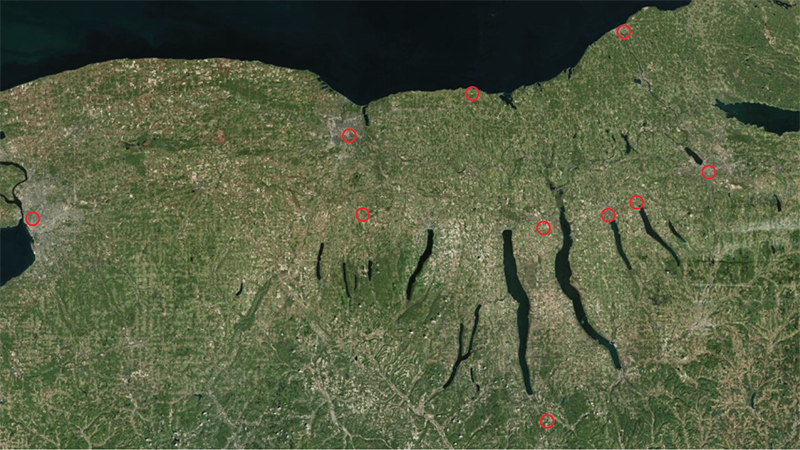
It is commonly believed that the African American population in New York State developed as a result of the great migration of African American southerners to the north in search of industrial (factory) jobs in the early twentieth century. In fact, there were a number of African American settlements and urban enclaves throughout the state dating back to the early 1800s. It is the primary reason the upstate region of New York became a center for the underground railroad, abolition of slavery, and the early formation of organizations such as the National Association for the Advancement of Colored People (NAACP). Small cities such as Rochester and Auburn were the locations Frederick Douglas and Harriet Tubman chose to call home.
BETWEEN POLIS AND GEOGRAPHY: African American Space in Upstate New York Explored is a studio that will explore the historical and contemporary urban morphology of a number of upstate New York small cities that have a legacy of African American inhabitation. Many of these cities and sites have an African American narrative connected to what is referred to as the Freedom Trail, a series of locations connected to the abolition movements of the early 19th century. The projects will speculate on how the insertion of new civic "minded" spaces can generate new ways to reference a history that is poorly celebrated at best or, at the worse, purposely suppressed and erased. The projects will engage questions of community, monument, memorial, and urban infrastructure. The studio will communicate with local community groups, city and state organizations that are invested in the preservation and furthering of this vital American history.
Milton Sernett
Emeritus Professor Syracuse University
Charles Davis
Assistant Professor, SUNY Buffalo
Elizabeth Kennedy
Yolande Daniels
Associate Professor, USC
Jeffery Hogrefe
Associate Professor, Pratt Institute
-------------------------------------------------------------------------------------
This Studio Talks series will take place virtually via Zoom. If you would like to attend, please contact the Department of Architecture, via kv272@cornell.edu.




